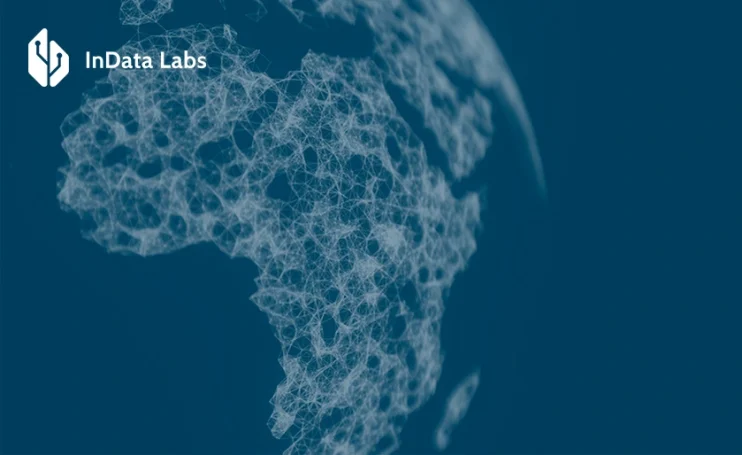People often bring up data analytics and decision-making in the same conversations. Increasing numbers of executives realize relying on gut instinct alone no longer suffices in today’s challenging and changing business landscape. They combine data analytics with industry knowledge, life experience and feedback from trusted parties, using all of it to reach well-informed conclusions about what to do next.
Getting the best results requires knowing the most appropriate methods to answer the desired questions. Then, executives can engage in business intelligence decision-making through data analytics, learning valuable things to shape their actions soon and well into the future. Many leaders combine this strategic decision-making with technologies such as artificial intelligence (AI) and machine learning, using advanced algorithms to get faster, more accurate results.

Source: Unsplash
What can data analytics reveal during the decision-making process?
Today’s leaders interpret information to make critical decisions. They can then act appropriately under pressure, feeling well-equipped to weigh choices that could affect a company’s bottom line and future prospects. Doing so allows answering business intelligence (BI) questions such as:
- What does the company’s average business user need help with most?
- Which types of data analytics will answer these pressing questions?
- What information should the company collect in real time?
- Is the existing big data team sufficient to meet current needs?
- Does the company need a custom-built machine learning algorithm?
The questions will vary depending on the type of business, the number of employees, the organization’s current priorities, and its most pressing challenges. Leaders should always determine the best and most appropriate ways to use BI tools before proceeding.
Assessing when and how to apply data analytics for business decision-making
The early stages of business analytics for data-driven decision-making involve gathering information. Executives typically request internal business data and solicit feedback from numerous stakeholders before combining it with their experience, knowledge, and feelings. Getting details before acting is a great start, but it’s even better if people can use specialized platforms or tools to build momentum. Those resources find patterns in massive amounts of information, providing insights much faster than humans could.
Sometimes, executives combine data analytics and decision-making to proactively address emerging issues. City planners in Texas did when responding to San Antonio’s longer, hotter summers. They launched three 2023 projects to identify the most at-risk neighborhoods, which aspects made residents especially vulnerable, and the most effective heat-mitigation measures.
Tests revealed a special pavement coating cooled the surface by an average of 3.58 degrees, offering the most significant results of all possibilities examined. Participating decision-makers intended to use this initiative’s data when planning additional measures, such as shade structures, energy-efficient upgrades and water features. Such approaches facilitate continual learning in business.
What are the main types of data analytics?
People must understand the different types of data analytics before deciding how and when to apply them. Getting advice about machine learning techniques for business is also helpful for showing people how well-trained algorithms accelerate processes.
-
Descriptive
The descriptive type of data analytics analyzes historical data to find patterns and relationships. Since it summarizes an event, outcome or phenomenon, data analysts often use this process to learn what happened in the past, taking that information to replicate or avoid those instances in the future.
Descriptive analytics can reveal:

When using this approach to make better decisions with data analytics, leaders should strongly consider implementing processes to verify and maintain the information’s quality. Duplicate or incomplete records could skew descriptive analysis outcomes, causing people to make the wrong conclusions. However, governance and data architecture improvements enhance outcomes. After people feed high-quality information into BI tools, they frequently conclude the results are trustworthy and valuable.
-
Prescriptive
While it’s helpful to use business data to verify what has happened over time, leaders often want to go further and understand how to achieve specific goals or anticipate emerging trends. Prescriptive analytics can show them. It analyzes factors including:
- A company’s current resources
- Its past and present performance
- The organization’s short- and long-term goals.
The prescriptive approach relies on advanced tools and processes to help people choose from various potential ways forward based on what they hope to accomplish. Statistics show that 91% of businesses have digital-first strategies. Analytics tools show how to build and improve them.
Leaders may want guidance on which automation business goals to set during an upcoming digital transformation. They may be interested in moving more documents to the cloud to support a distributed workforce, knowing doing so would elevate company productivity. This approach to data analytics for business decision-making encourages choosing actions for future success.
Regardless of the options, prescriptive analytics allow users to weigh the pros and cons, especially when they get advice from machine learning development professionals. Some people also recognize the similarity of prescriptive methods to big data analytics using multiple-criteria decision-making models, which helps them rank or choose from alternatives. Thorough assessments build confidence when business data reveals numerous potential solutions.
-
Predictive
People with backgrounds in data science and big data analytics make data-driven decisions in companies worldwide. Although leaders have many reasons for hiring them, one of the most common is a desire to anticipate future events, prevent them, or better prepare for them when they happen.
Although no method or person can know the future with certainty, predictive analytics comes close, using advanced algorithms, big data, and other advanced technologies. Many industrial decision-makers establish predictive maintenance plans for critical machinery. This approach often involves connected sensors that gather real-time data and analyze it for abnormalities. The hardware and algorithms detect problems, such as excessive vibration or gradual temperature fluctuations, that could cause failures if unaddressed.
Predictive analytics uses machine learning models to provide data-driven answers about how and when equipment will fail. Those insights allow the responsible parties to act before that happens, whether by scheduling service calls, ordering spare parts, or adjusting the budget to accommodate an unexpected purchase of a new machine.
-
Diagnostic
This data analysis method finds the root cause of known events. Suppose a patient visits a doctor after unexpectedly fainting at work. While learning about what led up to that instance, the physician would ask for details about her overall energy level, diet, sleep habits, and any unusual symptoms recently noticed. They’d use all that information to determine the likely cause of the fainting, whether it needs further investigation, and how to prevent it from happening again.
Corporate leaders do something similar to address issues like sudden operational efficiency changes. Perhaps average customer service call lengths have gotten 25% longer over the past eight weeks, leaving representatives unable to assist as many people as they once did. Diagnostic methods could examine what triggered the longer calls. Once leaders know that information, they can take decisive steps to address the problem.
When executives begin looking for root causes, they often uncover information management and utilization challenges. In such cases, data warehouse experts have the knowledge and experience to suggest customized success strategies.
-
Exploratory
Many data analytics types enable uncovering trends in large information batches. Such is the case with the exploratory method. Perhaps marketing analytics team members want to know the top words or phrases customers mention in reviews when giving positive or negative feedback.
Complementing technologies — such as machine learning (ML) — could help people get answers even more quickly. People also use exploratory data analysis to confirm hypotheses, which is a practical way to increase the likelihood of getting approval for a specific action. Employees who need permission from a board of directors, C-suite members, or others in authority will get a lot further when asserting their stance with a data-driven approach.

Source: Unsplash
-
Causal
People who engage in business analytics decision-making using data must often examine the likely effects of an identified problem. A causal analysis enables that, informing executives of what has triggered an issue and its impact on the business.
Consider a scenario where an executive wants to pursue data analytics in business decision-making but realizes the information volume associated with their company is so vast that they’re unsure how to start.
Although the cause can vary across companies and industries, leaders commonly don’t understand the type and amount of information gathered and why. The effects of such circumstances can include:
- Insufficient awareness of ongoing or emerging trends
- Disengaged or unsatisfied employees
- Poor training methods causing adverse outcomes
- Customers feel misunderstood by businesses.
Executives who pinpoint what stops them from engaging in data-driven decision-making using analytics can take appropriate action to remedy the problem. That may include hiring a company specializing in Big data analytics solutions or establishing best practices throughout an organization regarding how the company stores, processes, and uses information.
-
Mechanistic
Making better decisions with data analytics requires understanding the potential ripple effects caused when specific variables change. Mechanistic analysis works on this principle and is a popular method in physical sciences and engineering.
Sometimes, medical researchers apply it to learn more about effects in specific groups. One example comes from a 2023 rodent study, which showed the active ingredient in a non-opioid tranquilizer could exacerbate opioids’ life-threatening effects. The research team found the drug interferes with the brain’s mechanism for responding to rapid oxygen loss that occurs after opioid ingestion. Such findings could reduce fatalities in people with addictions, especially since many illicit substances have tranquilizers mixed into them.
People in pharmaceutical companies, hospitals, and substance abuse support services continually want to find ways to treat patients’ needs while lowering the risks of addiction or other unwanted effects. Mechanistic approaches break new ground in these areas. They also support successful machine learning projects, such as those that rely on algorithms to find new uses for approved medicines.

Source: Unsplash
-
Inferential
People can excel in data analytics and decision-making without access to all available information. That’s the principle behind the inferential method, which is used to make educated conclusions about larger populations based on evidence in smaller samples.
This is a popular approach used by entertainment executives who see how select audiences react to TV shows and movies before approving wider releases. Applying such data analytics in decision-making sometimes leads to surprising results.
In one example, executives spent $78 million and seven months making a superheroine movie that will never reach theaters. That’s due to the poor feedback among test group members, who were among the first to see it. Evidence was strong enough during those screenings to convince decision-makers that the most economical option was to cancel release plans.
Executives also use inferential analyses to determine how to address employees’ needs. If 55% of a company’s remote workers said they’d love to utilize more cloud services, that’s a strong indication many who did not provide direct feedback feel similarly.
Getting good results with data analytics techniques for decision-making
A useful thing to remember about data analytics for decision-making is that people may rely on several methods at different project stages. Accommodating that reality is a practical way to get the most valuable insights.
When people need to use various types, data analytics platforms can cater to them with rich and user-friendly features. Working with professionals who understand the benefits of Big data analytics is also wise, especially if decision-makers are interested in learning more but need help proceeding. Expert perspectives illustrate how accurate information and careful analyses support valuable learning in business and nurture growth.
Additionally, people should have well-defined reasons for examining and applying their business data to stated objectives. If an executive hired a predictive analytics development professional, that individual would almost certainly ask the client questions about the amount and kind of information to analyze. The discussion would also likely include mentions of the types of big data analytics previously used at the company.

Source: Unsplash
Assessing the client’s current familiarity with artificial intelligence, machine learning algorithms, big data, and other technologies also informs the service provider of the person’s expertise, fostering mutual understanding and accurate expectations.
Moving forward with business analytics
Successfully applying data analytics in decision-making requires an in-depth understanding of the eight methods detailed above. People should take inspiration from the various possibilities each offers and explore appropriate ways to tailor them to specific business needs. Getting expert insights throughout the process is an excellent way to maximize the outcomes and opportunities.
Authority figures should start by determining how much of their budgets they should devote to business intelligence decision-making through data analytics. They can then set goals regarding which questions to answer and determine how those insights connect to overarching company milestones.
Considering which business leaders will use the analytics platforms is also necessary, especially since a company’s cybersecurity and access control measures must accommodate the new tools or processes.
Finally, the appropriate parties should plan training sessions for each individual or team engaging in data-driven decision-making using analytics. People usually need time and support when adjusting to new processes, and providing it for them is an excellent way to encourage rapid adoption and accelerate success.



